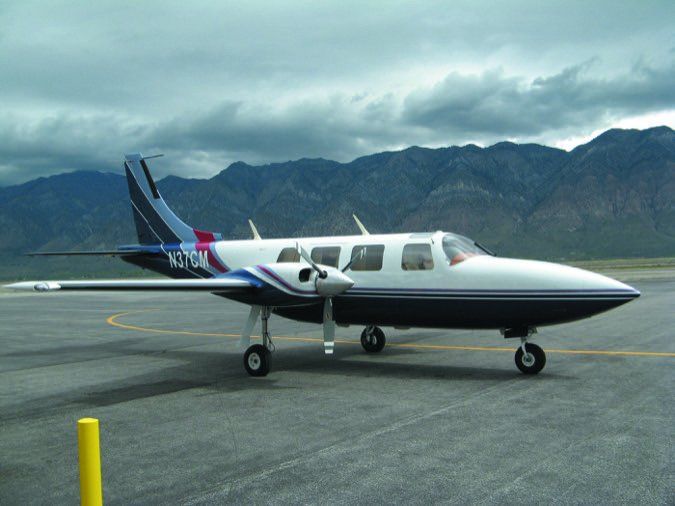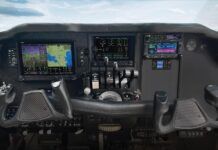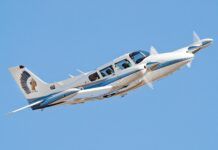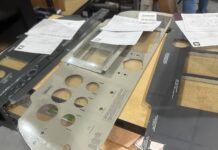There’s a lot to like about a Piper/Smith Aerostar. As piston twins go, the airplane has decent ramp appeal and passengers generally don’t complain about its cabin dwelling. Fly one and you’ll see why it has a rep for being blazingly fast, while demanding a healthy amount of pilot proficiency. Still, the aircraft has enough power to climb well on a single engine-something that can’t be said for many other piston twins.
But be ready to feed the machine, as the saying goes. The airplane’s Lycomings don’t exactly sip fuel and although it’s not terribly complex, the Aerostar fleet is aging and getting expensive to maintain. But for owners who can afford it, an Aerostar is hard to beat for getting from A to B faster than anything that doesn’t burn Jet A.
The Aerostar is the product of famed aircraft designer Ted Smith, whose name is attached to such classics as the A-20 twin-engine bomber and the Twin and Jet Commander lines. In 1963, Smith formed his own company to build a family of fast fliers, all built around the same fuselage, wings and tail. Five years later, the Model 600 emerged in 1968, with normally aspirated Lycoming IO-540 engines and a takeoff weight of 5500 pounds. A year later, the 601 appeared, with a pair of Rajay turbochargers and manually controlled, electrically actuated wastegates on each engine. With turbos, the engines could maintain 290 HP from sea level to 16,000 feet.
Selling Out
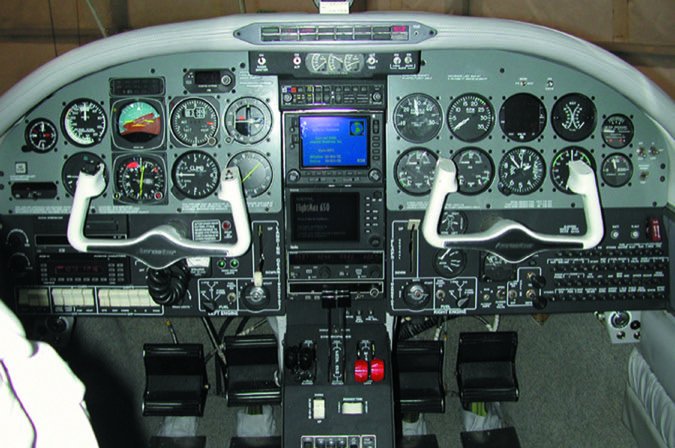
By this point, Smith had sold out, first to American Cement and later to Butler Aviation, which acquired both Aerostar and Mooney and moved them to Kerrville, Texas. A squabble between the new owner and the old over corrosion idled the line for two years. Unwilling to let his idea wither, Ted Smith organized a group of investors and bought the company back, setting it up in Santa Maria, California. The new company began building the 600A and 601A in 1973. The A models had Lycomings with heavier crankcases and crankshafts and engine TBO was boosted from 1400 hours to 2000 for the 600A and 1800 hours for the 601A.
The first pressurized Aerostar, the 601P, appeared in 1974, with a max differential pressure of 4.25 PSI, good for an 11,000-foot cabin all the way to 25,000 feet. The tenth 601P emerged with a longer wing (stretched from 34.2 to 36.7 feet) and higher max takeoff weight, 6000 pounds. These changes were incorporated in the unpressurized turbo model in 1977. The engines on the new B-model 601 were fitted with an automatic wastegate control, dumping the electric version.
Ted Smith died in 1978 at 70 years of age, after open-heart surgery. Plans for nine-seat Aerostars with 450-HP piston engines and turbines died with him, unfortunately. Later that year, the company was acquired by Piper Aircraft, which moved it from Santa Maria to Vero Beach.
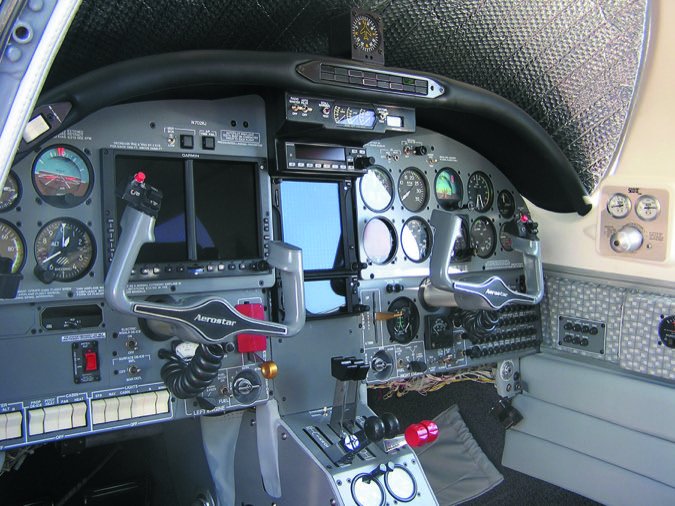
Piper kept at it, despite a soft market. It improved the wastegate system in the 601B and 601P, increasing critical altitude from 16,000 to 21,500 feet. A known-icing package-boots-was also added.
In 1981, the 602P was introduced, with engines and turbos certified and installed as a package by Lycoming. (Previously, turbos and wastegates were tacked on at the Ted Smith and Piper shops.) The last model, the 700P, was introduced by Piper in 1984 and had intercooled, 350-HP engines, cowl flaps and outward-rotating propellers. With only 25 built that year, the 700P is the rarest model. The most prolific model was the 601P, with 454 built by both Ted Smith and Piper.
The 600A remained in production the longest-10 years-but only 206 were built. Piper’s figures show 59 600s, 68 601s, 48 601As, 41 601Bs and 110 602Ps built before the line closed for good. Although Piper exited the cabin twin market by the late 1980s, the Aerostar line endured.
In May 1991, Piper sold the type certificates and STCs to Aerostar Aircraft Corp., headed by Stephen Speer and James Christy, both of whom had been involved in the Ted Smith days. The new owners pledged to keep Aerostar parts and support flowing and they’ve done just that.
One upgrade they offered is called the Super 700 Aerostar, which takes 601P and 602P Aerostars and fits them with 350-HP Lycoming TIO-540-U2A engines turning three-blade Hartzell props.
The airplane gets a gross weight boost to 6356 pounds ramp weight. Claimed 75 percent cruise is 261 knots, and initial climb rate is 1875 FPM. At economy cruise (55 percent), the fuel burn is 32 GPH and claimed speed is 225 knots. Owners report that the mod is worthwhile and the speed claims realistic.
Mid-Wings
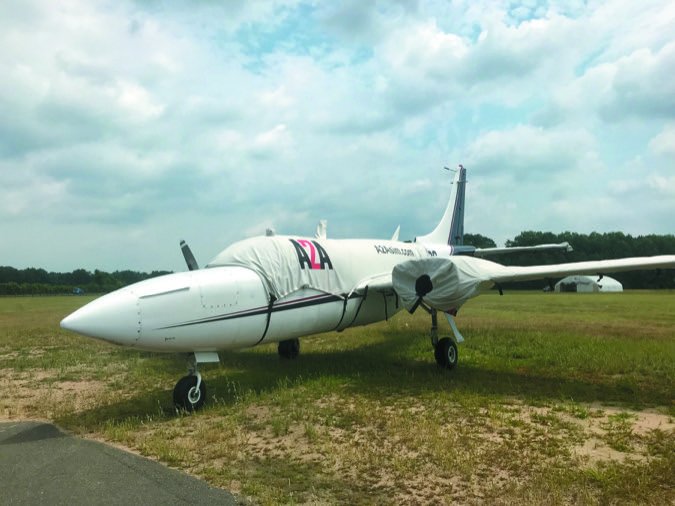
Ted Smith evidently liked mid-wing designs, as anyone who has seen a photo of an A-20 would surmise. The Aerostar’s wings are mounted midway along the oval fuselage and are the same NACA-64 series used on the Learjet. External skins are butt-joined and flush-riveted. Primary flight controls are via push-pull tubes, torque tubes and bell cranks.
Like larger aircraft, the landing gear, main gear doors, flaps and the nosewheel steering system are electrohydraulic. The nosewheel has its own steering control and isn’t connected to the rudders. Fuel-selector valves and elevator and rudder trim systems are also electric.
The engines are supposed to draw fuel from the two 62-gallon wing tanks and from the 41.5-gallon fuselage tank at the same time and at a rate that leaves 12 gallons in the fuselage tank when the wings have been emptied. But this only works in straight-and-level flight. The thin wing tanks easily become unbalanced-there are only two degrees of wing dihedral-and crossfeed must be used to bring them back in sync.
This shortcut led to trouble if the single fuel pick-ups in the wings became unported and electrical power was lost, leaving no way to reposition the valves. AD 79-1-5 sought to solve the problem by placarding crossfeed procedures and installing a low-fuel warning light and individual tank quantity indicators.
The 601 models have relatively high-compression turbonormalized engines, producing 290 HP. The 601P is especially prone to detonation if leaned to peak EGT at altitude. The 602P’s engines have a lower compression ratio, alleviating the detonation problem, and are ground-boosted to maintain 290 HP at 37 inches MP.
Alternators on most Aerostars are rated at 70 amps, but can actually put out only about 55 amps due to heat. Potential buyers should be wary of any airplane with an electric air-conditioning system. It’s heavy, has four motors that draw a lot of juice and cannot be used at night or in IMC. A better bet is an engine-driven-compressor system.
Performance
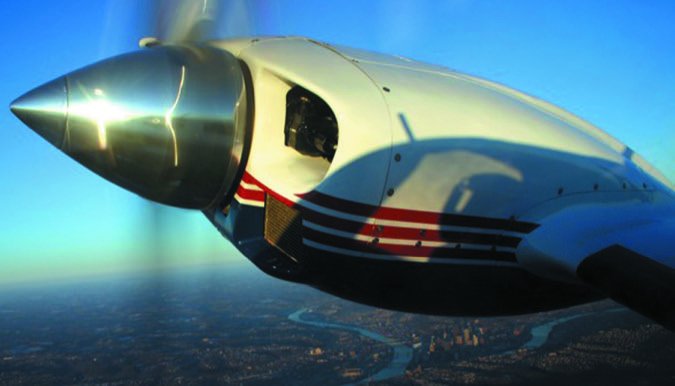
If you want speed, look no further than an Aerostar. The normally aspirated 600s will easily steam along at 210 knots on 34 GPH at 70 percent power. The 601 model can turn in an amazing 233 knots on 36 GPH at 70 percent power at 20,000 feet. The higher-powered 700P trues at a whopping 260 knots on an equally impressive 51 GPH at 81 percent power and 25,000 feet; throttled back to 65 percent power, a 700P can do 230 knots on 36 GPH.
As if the stock airplanes weren’t fast enough, Machen conversions make them even faster. At 75 percent power and 25,000 feet, a Machen Superstar 650 cruises at 240 knots on 42 GPH; a Superstar 680-intercooled-does 250 knots on 40 GPH. Machen conversions also improve single-engine performance.
Maximum published single-engine rates of climb are 360 FPM for the 600, 240 FPM for the 601s and 602P, and 320 FPM for the 700P. Accelerate/stop distances-with 20 degrees of flaps for takeoff-are about 3100 feet for the 600 and unpressurized 601s, 3400 feet for the 601P and 602P and 4000 feet for the 700P.
Since it was intended to become a jet one day, Aerostar handling can be said to be jet-like. That means high flap speeds-174 knots indicated for most models-and fairly high gear speeds of 156 knots. The Aerostar’s wing loading is an eye opener: 35.4 pounds/square foot.
High wing loading translates to high speed and a soft ride in turbulence, but also a brisk stall and a narrow slow-speed envelope. Crossing the fence at 100 knots, the Aerostar isn’t a terrific short-field performer but owners say it’s adequate.
Both Piper and the factory have modifications to improve the Aerostar’s stall behavior at aft CG and alleviate the restrictions imposed by AD 83-14-7. Most owners prefer Machen’s vortex generators to Piper’s water rudder. Stall behavior has been the focus of attention, thanks to tendencies to stall sharply when held into the break. The AD was issued to improve stall controllability with flaps extended with aerodynamic kits like those mentioned above.
Cabin Comfort, Load
Passengers are sometimes taken aback by having to enter the cabin by clambering over the pilot’s seat; that’s the only door in the airplane. Once inside, an Aerostar is reasonably comfortable, but no one would mistake it for a chapel; the noise level is quite high, especially in models without pressurization.
The cabin is more than 3 inches wider than a 55-series Beech Baron’s, but 3 inches narrower than a Cessna 310’s and has 2 inches less headroom.
Many owners have taken out one of the middle seats to make more space in the cabin. For a cabin-class airplane, it’s on the tight side.
It’s also not a great carrier. An Aerostar is hard-pressed to carry even five adults, their bags and a reasonable load of fuel. Real-world useful loads vary from a meager 1600 pounds for a lavishly equipped Aerostar to a marginal 1800 pounds with average equipment. Also, the airplane has a relatively narrow CG range and it’s easy to bust the limits. Weight-and-balance calculations are a good idea for takeoff and landing profiles, because the CG moves forward as fuel is burned. And in a twin, CG is always a worry for engine-out operations.
Maintenance
No surprises here. The Aerostar can be a hangar queen, but owners who say it’s a wrench hog also say that this is to be expected in any aircraft of this class and age. Even so, the Aerostar has a couple of marks against it. For one, it’s a compactly built airplane, so its systems are tightly packed and difficult to get to. Second, the systems themselves are complex. One owner reported dozens of individual failures in his first 18 months of ownership and another said elevating the airplane to squawk-free status is hopeless.
Since the type certificate is owned by a solvent business, owners do have a place to go for support. Aerostar Aircraft Corp. is holding up its end of the bargain, picking up on the task of issuing service bulletins. Some 18 have been published since the company bought the TC. All are conveniently listed on the Aerostar website. A critical one-SB600-136-describes visual inspection of the wing attach fittings. Contact the factory at 800-442-4242 or www.aerostaraircraft.com.
Mods, Owner Groups
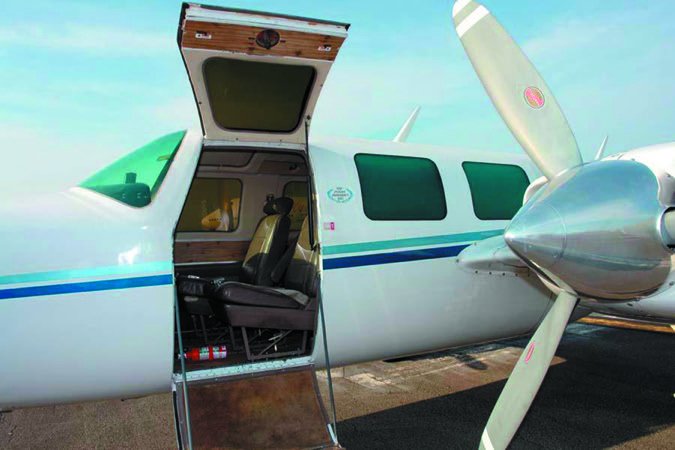
Interestingly, the factory offers the most mods for the Aerostar. These range from service bulletin kits to factory options available at the time the airplane was built, but not installed. The Machen Superstar upgrades are still available-the Aerostar factory website has a complete list-and given the low purchase price of the airplanes, many owners may find the prices attractive. Machen, by the way, still exists as a manufacturing company, but all of its mods are provided only through the Aerostar factory.
The Aerostar Owners Association publishes a magazine and holds regional meetings that focus on safety and maintenance. Contact the Aerostar group at 918-258-2346 and www.aerostar-owners.com.
Aerostar Mishaps: No Smoking Gun
Our practice in analyzing the accident history of an aircraft model is to review the 100 most recent and break them down by cause. We’re looking for indications of areas of concerns for prospective owners.
We looked back to 1985 in our search for 100 Aerostar series-every model-accidents. We found only 68 in the U.S. We also noticed that there has only been one reported Aerostar accident since 2012 and it was a maintenance-related main gear hangup. That’s quite good for a fleet that originally numbered more than 1000 airplanes.
We liked that we saw only four runway loss of control (RLOC) accidents-an indication of good ground handling and ability to handle a crosswind. One of those four events happened on landing in a 40-degree crosswind, with a half-mile visibility in blowing snow, on a slick runway.
As with a number of other airplanes, an Aerostar has to be sitting level when being fueled to completely fill the tanks. Otherwise, our accident review revealed no issues with fuel system design. There were six fuel-related accidents. Four involved fuel exhaustion with one of those following fueling on a sloping ramp-the fuel totalizer showed 15 gallons remaining when things got quiet. The other two fuel-related prangs were a result of mispositioned fuel selectors. One fuel exhaustion crash involved a pilot who was unable to follow repeated attempts by ATC to give him vectors. He flew around randomly until running out of fuel. The autopsy found tranquilizers in his blood.
Our experience in flying Aerostars is that they are high-performance machines that are not tolerant of a pilot who hasn’t had a thorough checkout and isn’t on his game. The accident record, in our opinion, reflected that experience. In most cases, the pilot let the airplane down rather than the converse.
We found seven accidents that were initiated by mechanical issues with an engine and the pilot was unable to either keep the airplane under control or get it to a runway on the remaining engine.
We’ve always acknowledged that the Aerostar airframe is robust and had that opinion supported by an accident in which the crankshaft in the right engine sheared as the pilot was turning final. The prop could not be feathered, which, with the gear and flaps down, meant the airplane could not make the runway. The pilot put it onto a road where it hit various objects and vehicles on rollout. The three strapped-in occupants were uninjured.
Maintenance issues-and decisions related thereto-were factors in more than one accident. A pilot who experienced a problem with one engine surging in cruise flight at altitude descended, landed and called his mechanic to discuss the matter. He decided to fly the airplane, with three passengers, on to his destination. The affected engine quit shortly after takeoff and the pilot put the airplane into a field where it came to a quick stop against a ditch. No one suffered more than minor injuries.
The “you can’t make this stuff up” accident we reviewed involved a pilot who, during preflight, discovered that the rudder trim tab couldn’t be centered. His solution was to remove the bolt connecting the tab to the actuator, leaving the tab free. The trim tab has no mass balance-it is restrained from entering flutter by being connected to the actuating system.
After takeoff the pilot “experienced vibration.” That was the trim tab in flutter, which potentially could have excited flutter of the rudder and loss of the rudder. Sensibly, he returned for landing. Unfortunately, he hit the airport fence on final, pulled up and then landed on the runway so hard he drove the main gear up into the wings.
Aerostar Transitions: More Like A Jet
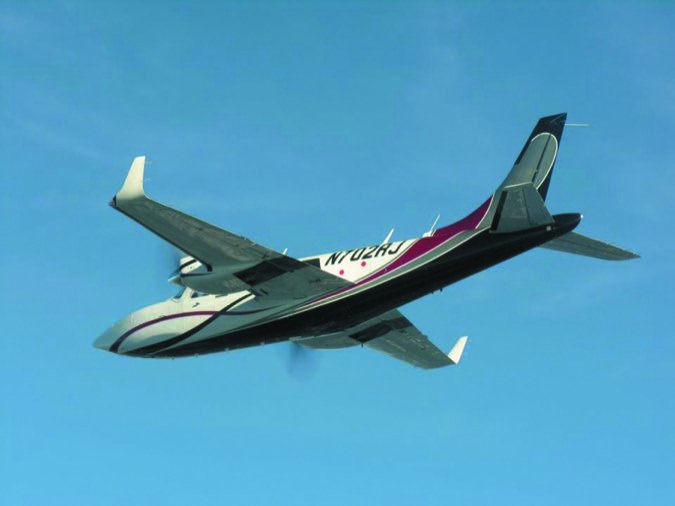
I specialize in Aerostar flight instruction and learned a long time ago that doing initial training in an Aerostar isn’t like multi-engine training in slower and less complex twins. Training in an Aerostar with its myriad of special systems to include the hydraulic, fuel and nosewheel steering, combined with its unique flight characteristics, is more like training in a jet then training in a Piper Seneca or Cessna 310. Part of that is because of the heavy wing loading and high horsepower. Moreover, the Aerostar is capable of operating as high as FL 250, which adds potential hypoxic and weather-related issues. This hardly makes the Aerostar (in any of its different models) the ideal transition airframe for a low-time multi-engine pilot.
There are also mechanical issues to consider since the newest Aerostars are over 40 years old. In most cases each airframe has been through multiple owners, and my experience is that some previous owners were less than fastidious in their level of maintenance during many hours of hard operation. Also, a dwindling number of maintenance shops have experienced mechanics on staff who can adequately service these aircraft, in my view.
Still, when pilots begin their Aerostar transition training they are impressed with the aircraft’s speed and its trip endurance. After all, it is the fastest production multi-engine aircraft produced. The relative cheap purchase price of the aircraft makes it attractive to pilots stepping out of Cirrus, Cessna TTx and other high-performance singles. But the addition of the extra engine adds a level of ground and flight handling that didn’t exist in their previous ride. There have been runway excursion incidents and accidents from both new pilots and instructors who are unaware that the alignment on the runway and non-counter-rotation of the props require a high level of vigilance when bringing up the power for the first time on the runway. The edges of the concrete can quickly shoot by when the pilot or unaware low-time flight instructor spools those high-horsepower engines for takeoff and the aircraft darts immediately for the brush on either side of the runway. Few instructors warn the transitioning pilot of the nosewheel alignment problem when taxing into position or leading with the left throttle because of the conventional turning of the props.
The insurance companies generally require between 10 and 15 hours of flight time in the aircraft for transitioning experienced multi-engine pilots or instructors and 20 to 30 hours for low-time (15 hours or less) multi-engine pilots or instructors. Additionally, since there are few if any flight training devices (FTDs) or pure simulators that emulate the many Aerostar models, most insurance companies require in-aircraft training. The number of insurance company-approved instructors can be counted on two hands. The reason is that the majority of flight instructors simply have no experience in Aerostar airframes and that likely won’t get better. After all, there is little incentive for specialized instruction for forty-year-old-plus aircraft when there are only 700 or so still flying fleet-wide.
Having said all of these negative things about transitioning to the Aerostar, nothing is more beautiful then to look out the side window of the aircraft and see the silhouette of the impressive Aerostar moving rapidly across the ground. My advice to those considering a transition is to enjoy the Aerostar, but use prudence and caution when considering such a flight-capable aircraft.
-Ron Cox
Owner Feedback
I have been flying since 1969 and I’m getting to be an old guy. I’m a single- and multi-engine, instrument, and commercial-rated pilot with over 6500 hours of flight experience. I was trained by Emory Wheat in 1969 through 1970 at Aldino Airport (0W3) in Churchville, Maryland, and he was my aviation mentor my whole life until his death last year. At the time, he was a charter and demo pilot, flying the Aerostar 600 for Henry Weber Aircraft-an East Coast sales center in Pennsylvania.
While moving up through the ranks as a single-engine pilot, I was able to fly right seat with Emory in the Aerostar and accumulated over 100 hours. I cut my teeth as a new single-engine pilot in a Mooney Super and then in a Mooney Executive. Next came a Piper Cherokee Six and then a Piper Saratoga, which allowed me to fly an air hearse service for my funeral business.
In 1992 I moved up to N444HM, a Smith Aerostar 600A. It was a fix-up project, but a good, solid airplane. I had the engines overhauled by Columbia Aircraft in Bloomsburg, Pennsylvania, in 1993 and had it painted by Cimarron Aircraft Painting in Oklahoma City, Oklahoma, in 1994. The paint job was excellent, but I had questions about the engine overhaul after experiencing a deer strike while landing in Ocean City, Maryland, in 1997. While having both engines torn down, we found problems with the camshafts in both engines after only 300 hours on the overhaul. Needless to say, I would not return to Columbia, if they are still in business, for my next overhaul.
The Aerostar 600 has served me well as I basically fly around the eastern half of the United States. Henry Weber Aircraft in Lancaster, Pennsylvania, still performs my annual inspections and maintenance. I would recommend them to any Aerostar and Mooney owner. Steve, Doran and Larry at Weber’s have many years of experience with both aircraft and know them inside and out.
The Aerostar is definitely a pilot’s airplane and anyone transitioning up to it should seriously consider initial training by an experienced Aerostar instructor. Even after the initial training, I recommend annual refresher training as the Aerostar is a high-performance, semi-complex aircraft. I use Lester Kyle in Vero Beach, Florida, for annual training. Even after 25 years and some 2000 hours in the Aerostar, I always learn something new during each session.
Thank you for allowing me to ramble about the Aerostar. I hope something I have said will help other Aviation Consumer readers that are considering an Aerostar.
You do a good job with the publication and I look forward to receiving it every month.
Howard McComass III
Abington, Maryland
I have owned a 1978 Ted Smith Aerostar 601P/700 since 2002. At the time I bought it, I’d been looking for a pressurized piston twin that could easily haul my family of four with a 1000-mile max range. I needed one with a single-engine service ceiling high enough to clear the mountainous terrain where we live. I’d settled on a Cessna 340 and I was down in Las Vegas looking at one. Parked right next to it was an Aerostar. The owner was there, told me it was for sale and asked if I wanted a ride. During the taxi, I began to like it.
The electric nosewheel steering and cockpit design makes you feel a bit like you’re in a jet. With brakes released at full power, the acceleration really presses you into your seat. At rotation, where many other piston aircraft anemically rise off the runway, the Aerostar leaps into the air like it’s just aching to be up there.
With gear up and flaps up it easily climbs at 2000 FPM. Maneuvering the Aerostar is pure joy. Roll and pitch response is snappy and the plane goes where you point it. The high wing loading makes the Aerostar cut through turbulence like a knife through butter. Landing the plane is also impressive. It’s so close to the ground that sometimes I only know I’ve touched down because I hear the tires screech.
I was so impressed at how this Las Vegas plane felt to fly, I agreed to buy it right then and there. It was love at first flight. Now I don’t haul my family anywhere; I fly them.
The numbers: I flight plan for 220 knots true and typically fly in the low flight levels. I burn an average 41 GPH. Total wet cost per hour for me has been $460 at 100 hours per year. That would drop to $360 if I flew 200 hours per year. This includes my insurance cost, which dropped to $2800 per year to cover both hull and liability. At over 1000 hours in type, my insurance company no longer requires annual recurrency training.
I’ve had four “opportunities” to fly and land this plane on one engine and its behavior on one engine is also impressive. Directional control is downright docile compared to the Seneca and Beach Travel Air I’ve had similar experiences with. I assume this is because of the long-lever arm from center of lift to the rudder, and the short-lever arm from the operating engine (they are mounted quite close to the fuselage).
The key to avoiding disaster here is not to get too slow. The long rudder lever arm also makes this aircraft a breeze to land in strong crosswinds, which is something else we have a lot of where I live.
In 2008 I had the failing -S1A5 engines replaced with factory-rebuilt -U2As. With the old engines, 90 percent of my unscheduled maintenance had been under the engine cowls. Thirty percent of my flying time was to and from a maintenance facility because there’s no mechanic on my home field.
Now with the new engines, it seems I only have to fly to The Flight Shop in Brigham City, Utah, for scheduled oil changes and annuals.
The Aerostar is a wonderful pilot’s aircraft that’s a pure joy to fly. For the cost, speed and endurance, there is no pressurized piston twin that compares.
Peter Jensen
Rock Springs, Wyoming
I have flown my 1977 Ted Smith Aerostar 601P for more than 3200 hours since 1990. I will leave the financial point of view to others. I feel if you have to ask how much it costs to own and operate a pressurized Aerostar then you can’t afford it.
Aerostar owners/pilots are a cult just like Harley Davidson Motorcycle owners. We like the handling, the power and the ramp appeal. Many of us have owned or flown turboprop and jet aircraft, which we enjoyed as well, but when we get to the end of our flying, the Aerostar is still in our hangar and the others have been sold. That might explain why many of the nicest Aerostars are not for sale.
The Aerostar Owners Association has been around since 1970 with some 350 members worldwide. Through our organization we have seen great achievements in maintenance and safety for our beloved Aerostar and pilots.
In 2002 we suffered the loss of 10 Aerostars and pilots due to accidents. After 2002 we started an all-out effort to eliminate Aerostar accidents, both fatal and nonfatal. We made progress. Flash forward to 2013 where we had only had three accidents and none of them were fatal. The reason for our success is better initial and recurrent pilot training with emphasis on understanding of the Aerostar systems.
Aerostar owners are blessed to have all of the parts they need and a manufacturer who continues to provide us with new options for our Aerostars. In the downturn of general aviation it is great to have Aerostar Aircraft Corporation to provide us with unlimited support.
To quote one of our new AOA members, “The Aerostar is a Baby Airliner.” He is right. These airplanes have hydraulic-operated flaps, landing gear and electric nosewheel steering similar to some airliners. There’s cabin pressurization, pneumatic door seals and a temperature-controlled cabin using bleed air for cabin heat at altitude.
A few years ago I wrote an article for the Aerostar Log titled “What’s Your Mission?” The article talks about the majority of Aerostar models (except the 702P and the Aerostar Jet), which were not available at that time. I highly recommend this article to anyone thinking about an Aerostar; it will help you understand the value of Ted Smith’s vision.
As you can tell I’m very happy with my Aerostar decision of 24 years ago and will continue maintaining and training in my Aerostar until they no longer let me fly.
Every time I take off and climb to the flight levels in my Aerostar I’m always amazed with her performance. The only thing better than my Aerostar would be an Aerostar Jet, which I have had the pleasure to fly as well. Ted Smith would be so proud of the longevity of his design.
Ken Bacon
AOA Executive Director

